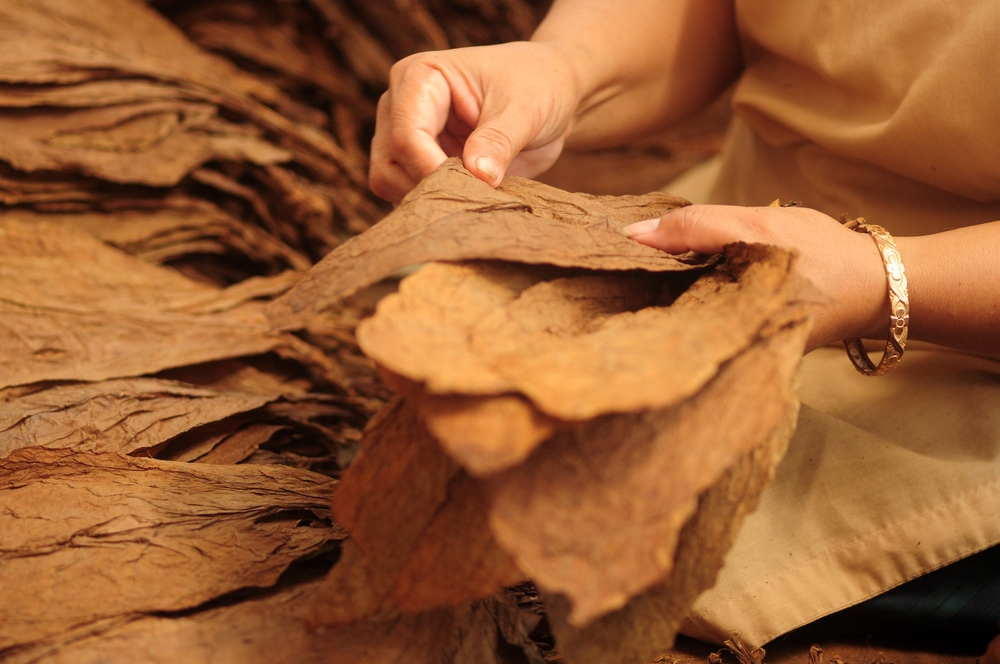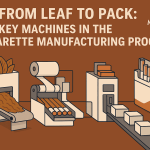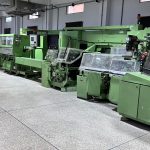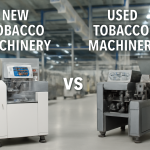Efficient tobacco leaf processing is the backbone of consistent flavor, burn quality, and product uniformity. Whether you operate a small‑scale craft facility or a high‑capacity factory, refining each stage—harvesting, curing, fermenting, grading, and storage—can cut costs, lower waste, and elevate product quality. Below are 10 tips you can implement right away to optimize every link in the tobacco processing chain.
1. Harvest at Peak Maturity
Why it matters
Leaves picked too early lack essential sugars and alkaloids; those harvested too late develop excess nitrates and tar. Timing directly affects combustion and flavor.
Implementation tips
-
Field monitoring: Track leaf color shift from deep green to a light yellow‑green.
-
Moisture testing: Aim for leaf moisture around 75 % at harvest to reduce bruising.
-
Staggered picking: Harvest lower, middle, and upper stalk positions separately; each layer ripens at a different speed.
2. Optimize Pre‑Curing Handling
Bruised or torn leaves invite mold and uneven color development.
-
Gentle bundling: Use soft twine, spacing bundles 10 cm apart to improve airflow.
-
Shade staging: Keep freshly picked leaves under shade for 2–4 hours to equalize internal moisture, reducing browning during curing.
3. Create the Ideal Curing Micro‑Climate
Curing Phase |
Temp (°C) |
RH (%) |
Duration |
Target Color |
|---|---|---|---|---|
| Yellowing | 30–32 | 85–90 | 48 h | Light Yellow |
| Leaf Drying | 38–42 | 70–75 | 24 h | Yellow‐Gold |
| Stem Drying | 45–50 | 60–65 | 24 h | Crisp Stem |
Pro Tip: Use data‑logging sensors connected to automated dampers and heaters. Fine‑tuning air exchange rates by as little as 5 % can prevent green patches and mold outbreaks.
4. Control Fermentation Temperature Gradients
Fermentation develops flavor compounds and removes excess ammonia.
-
Layer stacking: Stack leaves no higher than 1 m; taller piles risk overheating (>55 °C).
-
Turn schedule: Rotate bulk every 48 hours until temperature peaks at 50 °C, then cool to 35 °C before restacking.
-
pH checks: Maintain pH between 5.2 and 5.6 for balanced acidity and aroma.
5. Invest in Energy‑Efficient Barn Retrofitting
Old flue‑curing barns can waste up to 40 % of heating energy.
-
Insulated panels: Add reflective aluminum‑lined insulation to reduce heat loss.
-
Variable‑speed fans: Match airflow to each curing phase, cutting electricity usage by 15–20 %.
-
Heat exchangers: Reclaim exhaust heat to pre‑warm incoming air.
6. Implement Real‑Time Moisture Monitoring
Manual leaf “snap tests” are subjective. Replace them with:
-
Capacitance meters during curing for leaf moisture.
-
Infrared moisture analyzers on conveyor lines for post‑fermentation control.
Maintaining final leaf moisture at 12–14 % minimizes breakage during grading and packing.
7. Standardize Grading Criteria with Digital Aids
Inconsistent grading erodes customer trust.
-
Computer‑vision systems evaluate color uniformity and vein patterns.
-
Bar‑coded bale ID tags capture origin, curing lot, and quality grade, enabling traceability back to field level.
8. Adopt Lean Manufacturing to Reduce Waste
Apply 5S (Sort, Set in order, Shine, Standardize, Sustain) on the plant floor:
-
Sort: Remove outdated tools that slow processing.
-
Set in order: Color‑code curing racks for fast batch identification.
-
Shine: Daily cleaning halts mold spores before they spread.
-
Standardize: SOP checklists for each shift ensure uniform handling.
-
Sustain: Conduct weekly audits and empower operators to flag inefficiencies.
9. Upgrade to Low‑Impact De‑Stemming and Cutting Equipment
Mechanical damage can crush leaf veins and release bitter phenolics.
-
Servo‑controlled knives maintain precise cutting angles and pressures.
-
Vacuum‑assist de‑stemmers lift mid‑ribs without tearing lamina tissue, preserving leaf integrity.
10. Store Finished Leaf Under Controlled Atmosphere
Quality can still degrade after processing if storage is inadequate.
-
Temperature: Maintain between 15–18 °C.
-
Relative Humidity: Keep steady at 60–65 % to prevent overdrying.
-
Gas‑flush bales: Inject nitrogen to slow oxidative browning for long‑term storage (>6 months).
Conclusion
Efficient tobacco leaf processing hinges on meticulous control at every stage—from precise harvest timing and optimized curing micro‑climates to lean manufacturing and advanced storage solutions. Implementing these pro tips will lead to:
-
Higher‑grade leaf yield
-
Consistent flavor profiles
-
Lower energy costs
-
Improved regulatory compliance
Adopt a continuous improvement mindset, leveraging real‑time data and modern equipment to stay competitive in a rapidly evolving tobacco industry.





